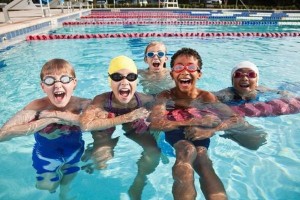 Warmer weather has us looking forward to times at the pool, lake, or beach for fun. Unfortunately, these bodies of water can be places of extreme danger, especially for young children and non-swimmers. Drowning is the number one cause of accidental death for children under five and individuals in the autism spectrum. It’s second in other age groups.
Warmer weather has us looking forward to times at the pool, lake, or beach for fun. Unfortunately, these bodies of water can be places of extreme danger, especially for young children and non-swimmers. Drowning is the number one cause of accidental death for children under five and individuals in the autism spectrum. It’s second in other age groups.
We have the challenge of training our children to understand that water is both dangerous and fun. I encourage parents to view the water as an interstate highway. Parents begin teaching children to fear the street when they are young, but the freedoms granted on the street grow gradually – from crossing the road, to riding a bike, and culminating to one day driving a vehicle. The freedoms that are progressively enjoyed are directly related to the maturity of a child and his ability to take responsibility for the danger.
Understanding this will help a parent train a child around water. Unlike the street, where the visual image of a car leaves an impression on a young child, the water looks inviting. Most young children have no comprehension that water is dangerous. The danger of water comes from the fact that when someone goes under, they experience what it’s like to not have air, a sensation that’s virtually foreign to our mammalian existence. What’s more, for a non-swimmer there is no understanding of how to get air. To find that balance between having respect for water and enjoying it, parents and adults that are non-swimmers must take two major steps. Step one is learning to have boundaries outside of water. Step two is learning what to do once in the water.
Boundaries around water are the primary line of defense. Safer Three, a national organization committed to drowning prevention, lists the first area of safety as safer water. This means that pools should have barriers such as fences and larger bodies of water should have Boundaries defined by the parents (for example, at the lake home, docks are off limits without adult supervision!). Included in the concept of safer water is making sure that children do not sit on the side of water alone, and that toys stay contained until actually in the water. Children should be within arm’s reach until they can be trusted to not go to a water’s edge without supervision or permission.
The other aspect of boundary preparedness is that no one should go in water alone. This is a non-negotiable boundary for even the strongest of swimmers. Everyone needs what’s called a water watcher. According the National Prevention of Drowning Alliance (NDPA), “Supervision is the one layer that should be ever-present no matter what other layers are utilized.”
The second step in water safety is learning how to be safe swimmers. Learning to swim involves finding balance and breath control in a buoyancy-based environment. Good swim lessons should include lots of submersion and swimming without floatation devices. The only way to learn to be safe in water is to learn how to self-propel, get air, and find a means of escape should someone fall in unexpectedly.
Taking these two steps – establishing boundaries and learning to swim – will create the balance between respecting the fact that water is dangerous and also that it’s a source of enjoyment that lasts a lifetime.




